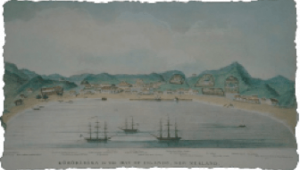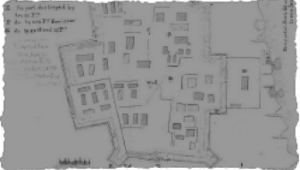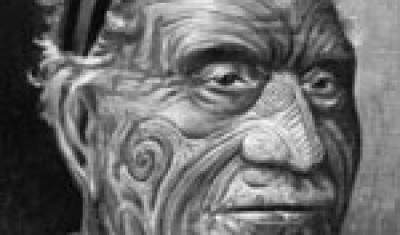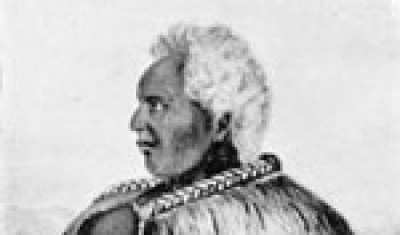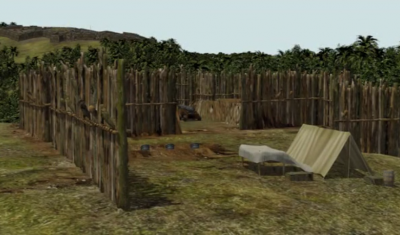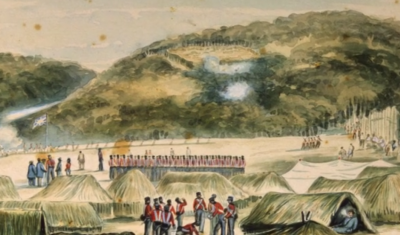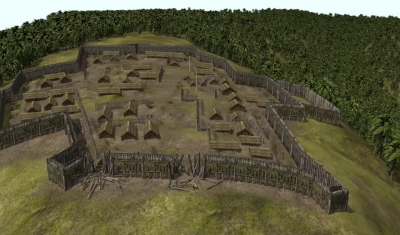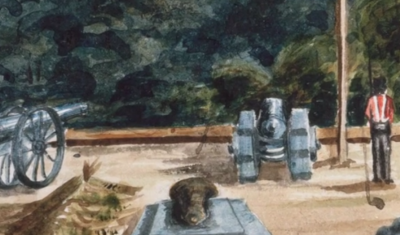
British Positions



The soldiers set up three positions north-west of the pa: their living camp and two specialist gun batteries. The larger of these housed mortars and 32-pounder cannon, while the smaller battery further forward contained a smaller cannon and a howitzer.
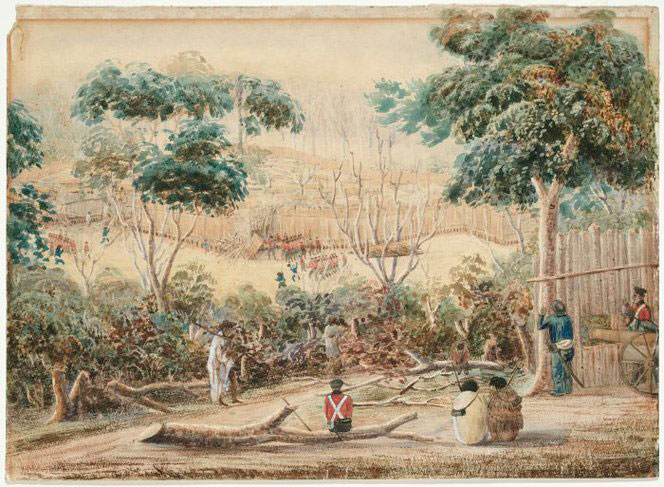
Painting of the British positions.
From the Alexander Turnbull Library
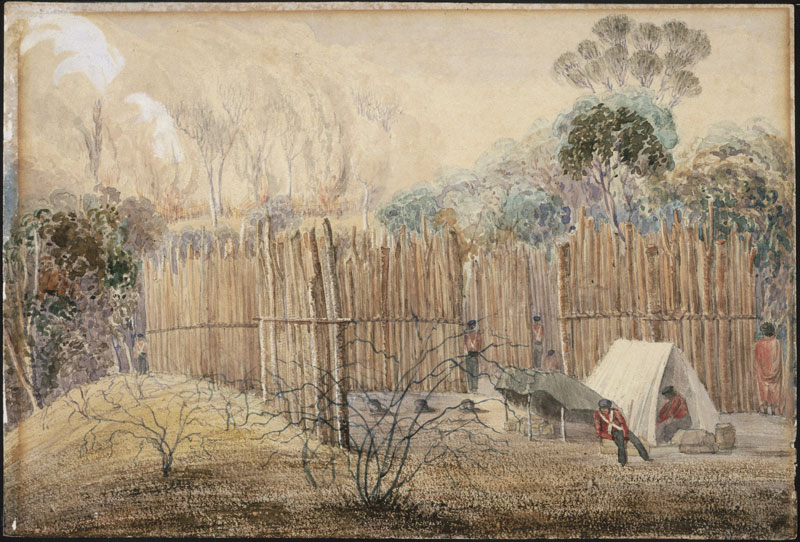
Major Cyprian Bridge's painting of the Main Advanced Gun Battery
From the Alexander Turnbull Library
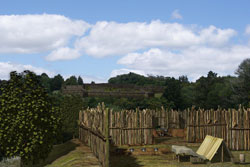
Digital recreation of the British Positions
There is less written evidence available about the British positions than there is about the pā – detailed descriptions were not written down at the time, and nobody felt the need to draw plans of the British setup. Furthermore, the traces left in the ground are less distinct. The outline of the main gun battery is visible from the surface, but main camp looks like any other paddock. As for the forward battery, no surface evidence remains and we cannot even be sure of the exact location.
Fortunately, soldiers of the 58th regiment spent time painting the British positions, and some details can be gleaned from contemporary written sources. Archaeology can help, despite the relative lack of surface evidence. In 2006 the camp and the main gun battery were scanned using a fluxgate gradiometer – a machine, which can detect underground features by measuring magnetic anomalies. From these results we can add a few more details to our models.
The main British camp was located to the north-west of the pā at a distance of about 800 meters. Here there was a fairly small flat area of ground, surrounded by forest and separated from the pā by a deep gully. A huge 32-pounder cannon was positioned at the eastern side of the camp, facing up towards the pā, with the Union Jack fluttering in the wind above. The 12-pounder was positioned alongside, mounted on a wheeled carriage, and neat pyramids of ammunition were stacked around the place. Nearby, the gun battery was a large grass hut with a low post-and-rail fence, perhaps a command centre storage facility or an ammunition store. Much of the above detail is taken from a well-known painting by Major Cyprian Bridge. This painting shows the infamous Congreave rockets being fired from their launching tubes at Ruapekapeka Pā that is visible in the distance.
To the west of the battery were neat rows of sleeping huts, protected with high wooden fences. The march to Ruapekapeka was so difficult that the tents were left behind. Nene’s men helped the soldiers to build grass huts “5 feet high and 6 feet long” shown in several of the paintings, and they slept in nest of fern.1 Living conditions were uncomfortable. The makeshift shelters did were not exactly watertight, and on the night of January 4 a heavy rain pour left the soldiers soaked through and shivering.2
We know very little about the smaller forward battery, which housed an 18-pounder cannon and a 12-pounder howitzer. We do know that it was less than 150 metres away from the pā and to the west of the main battery. From there, the soldiers were able to concentrate their fire upon the south-west angle of the pā.
There is more to be said about the main forward battery, which was located about 200 meters away from the pā. This is where two 32-pounder cannons and four mortars were set up. The archaeological evidence reveals the shape of the structure and some details of the defences. The surface features have been softened and blurred over time, but the remains of a pentagonal stockade with ditch-and-bank defences are apparent. A wonderful painting by Cyprian Bridge shows a sturdy timber wall, more than twice the height of the men standing next to it. The rear of the stockade (facing away from the pā) was open, because the frontal and lateral defences were thought sufficient to protect against fire from the pā.
The cannons and mortars were mounted within the stockade, facing the pā on the hill across the valley. Geophysical survey results suggest that cannon-balls and other munitions were kept in a pit within the stockade, and more were scattered on the ground around the forward-most of the cannon. At the rear of the stockade there was a building platform, probably for a tent or some kind of shelter for the soldiers manning the position.3
It is certainly possible to over-state the strength of the British forces facing Kawiti and his warriors. The British were better-equipped than Kawiti and his men, but that is not to say that they were well-equipped. They were forced to make do with the resources that were available, and as a result, their camp and the main gun battery had something of a hybrid “colonial” feel. There were no tents, so the soldiers built Māori-style grass huts. The rustic wooden fences protecting the gun battery were not all that different from the fences around and within Ruapekapeka Pā. Adding to the hybrid feel was the strong Māori presence within the British camp, the allied Ngāpuhi warriors mingling freely with the soldiers and sailors.4 Nor were the British positions as secure as might be expected. There was genuine concern about Kawiti striking out from the pā, hence the ditch-and-bank defences and strong timber walls.
Ruapekapeka was a very impressive fortification, strong and very well designed. But the fact remains: it was made of timber and earth. No matter how well designed, such a structure cannot stand up indefinitely against cannon, howitzers and mortars. The resources available to the British were somewhat limited, but they had their priorities sorted: get the artillery and the ammunition up to the pā, set up gun batteries, and blast away.
